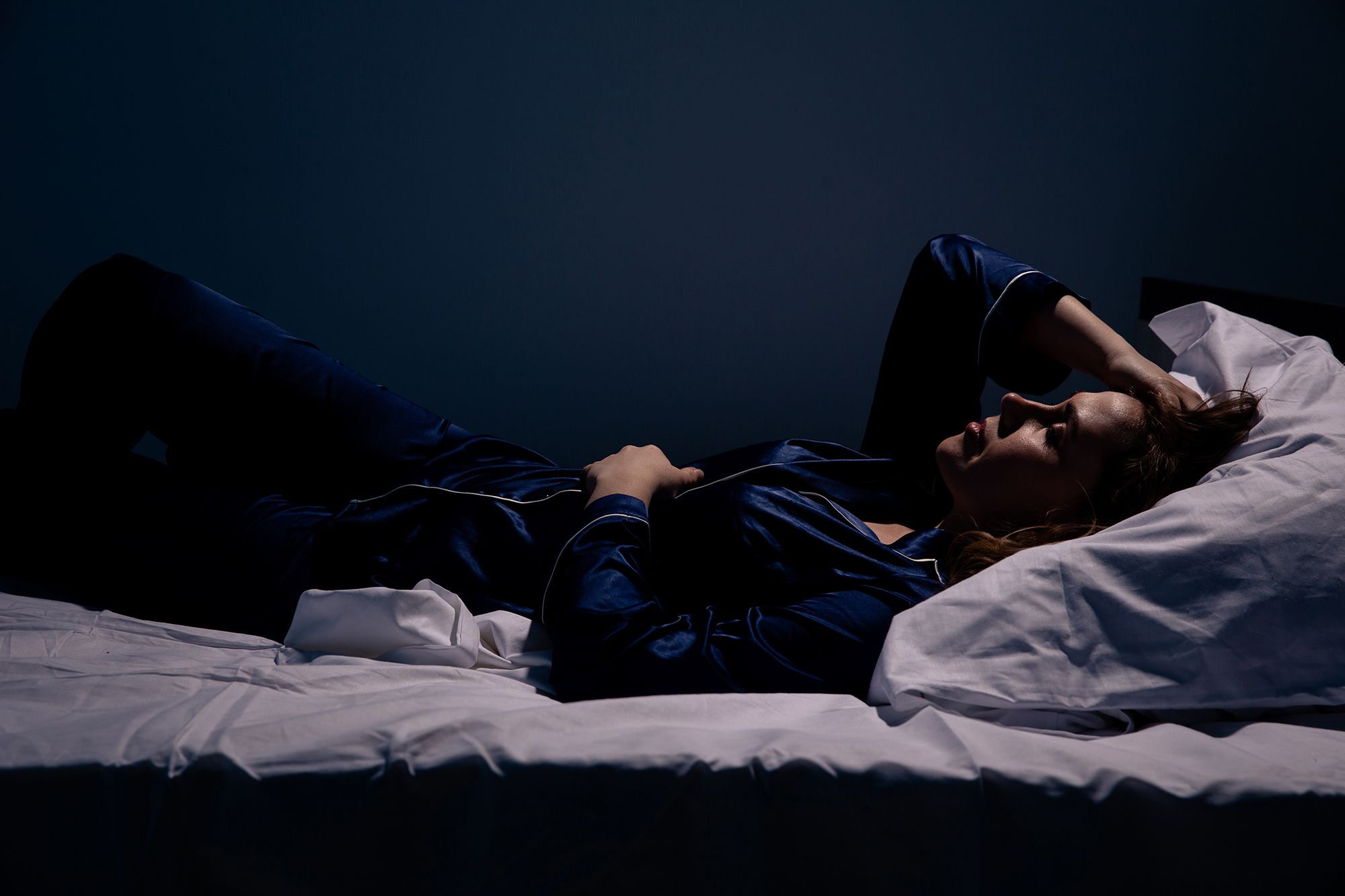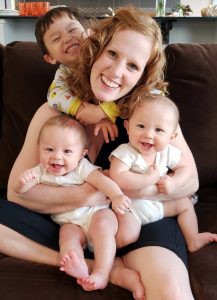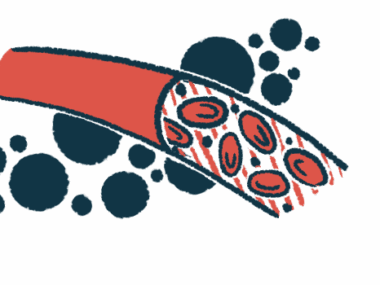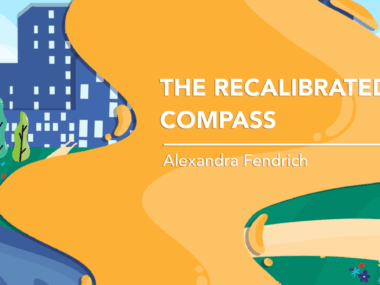What My Nightly Struggle With Invisible Illness Looked Like
Written by |

At 3:30 a.m., I sat in bed gasping for air with acute pain in my chest.
Like every other night, I had gone to bed at 10 p.m. after completing my usual routine, which started a few hours before bedtime. My goal was always to get as many minutes of sleep as possible.
I prepped all my pillows for lying on my right side: one pillow for my head, one pillow for between my legs, another very fluffy pillow for hugging (so that my body didn’t have to “twist” too much as my left arm was pulled down by gravity), and one pillow for my back (again, in an attempt to keep me from “slouching” as I slept on my side, which I didn’t even know was possible earlier in life).
I put on my wrist support brace for my sore and weak wrists. I wore my night guards because my temporomandibular joint disorder often flared as I clenched and ground my teeth when the pain arrived. I used a TENS machine for 30 minutes and stretched for another 30 minutes.
I took a hot shower in an effort to calm my muscles. I rubbed A535 cream on my hips for pain relief. For good measure, I swallowed a few naproxen and Tylenol. Finally, I arranged myself among all the pillows on my bed with a heat pack on my back.
By midnight, I was already stirring.
By 1:30 a.m., it felt like daggers were digging between the ribs on my lower left back. When I could no longer stand the pain, I tried to switch positions. Once on my back, I felt like I couldn’t breathe, so I carefully continued the journey to my left side.
The movement seemed to awaken a beast: I felt both a dull throbbing and a sharp pain all over my back as well as a tightness in my chest, which made me unable to take full, deep breaths. I worked up the courage and the strength to slowly pull myself up to a sitting position. This is where I stayed for a while until every shallow breath caused acute pain in my chest. By this point, it was 3:30 a.m..
I pulled myself out of bed. I warily shuffled past my twin infant boys’ room, thankful they were sleeping restfully. I knew from past experience that lifting them out of their crib would be impossible in this state. I gingerly continued past the door behind which my 4-year-old boy was resting peacefully, knowing he’d be counting on me at 7 a.m.
Slouched, I dragged my feet to the bonus room where I gingerly lowered my aching knees to my yoga mat and tried to gently stretch my back. I could already feel the stiffness setting in, but at least the stretching allowed me to get some deeper breaths of air into my lungs.
By 5 a.m., I was able to breathe normally again, and the pain was mostly gone. I tucked myself comfortably back into bed beside my husband, who had thankfully been able to rest despite all my moving and writhing.
By 6:30 a.m., it was time to start the day. By this point, the stiffness had set in; I couldn’t turn my neck sideways or bend it up or down, so I walked like a robot to the shower to run hot water on my broken body.
This happened nightly for months.
I came to dread nights. I was so exhausted. I was unable to function like the wife, mother, and friend I wanted to be.
It would have been hard for anyone who wasn’t close to me to know about my struggles. I would usually feel flexibility return to my body by 10 a.m., and anyone who saw me that day would be unable to guess that my body was letting me down.
I distinctly remember this picture my husband posted on Facebook of me with the kids on Mother’s Day in 2018. We looked so happy, but I was a wreck that day.
I wondered if my 120-pound body was so wrecked after carrying twins full term that this was going to be my new normal. I knew life couldn’t go on in that way, but after seeking out countless health professionals and therapists, I simply didn’t know where else to turn for help. I was desperately searching for answers to my pain and felt desperately sad about missing out on the joys of a young family.
Ankylosing spondylitis, or any other incurable disease for that matter, wasn’t on my radar.
In addition to surviving, I needed to become my own health advocate. I rolled up my sleeves and began my fight for answers.
***
Note: Ankylosing Spondylitis News is strictly a news and information website about the disease. It does not provide medical advice, diagnosis, or treatment. This content is not intended to be a substitute for professional medical advice, diagnosis, or treatment. Always seek the advice of your physician or other qualified health provider with any questions you may have regarding a medical condition. Never disregard professional medical advice or delay in seeking it because of something you have read on this website. The opinions expressed in this column are not those of Ankylosing Spondylitis News, or its parent company, Bionews, and are intended to spark discussion about issues pertaining to ankylosing spondylitis.







John B
Thank you for your honest and vulnerable article, Janneke! It was both incredible and encouraging to read about experiences of pain, stress and fatigue so similar to my own. I have been living with the effects of AS since I was 19 and was formally diagnosed at 30. This was an encouraging article in light of what seems to be a resurgence in symptoms that I thought vanished, but which may in fact had only relapsed for a whole year! I like to write and would love to be and encouragement to others on this site.
Janneke Phung
John, thank you for your encouraging words! It is nice when we come across people who can commiserate with us. Wishing you well on your journey, despite the resurgence in symptoms. Just keep swimming!
Lynne
Does she take a biologic for AS now?
Janneke Phung
Hi Lynne, thanks for dropping by and for leaving a note! No, I have not needed any medication since making drastic changes to my lifestyle and diet. I hope to write about my journey in the months to come. Stay tuned :)
Michael Gale
I'M GLAD YOU FINALLY OBTAINED A DIOGNOSIS! I WAS ALSO SUFFERING WITH HIP PAIN WHILE IN THE MARINES FROM 1978 TO 1982! I GUESS ALL THE WEIGHT HAULING AND RUNNING, CARRYING MY M60 MACHINE GUN ON FORCED MARCHES WITH FULL GEAR AND BACKPACK,CARTRIDGE BELT AND CANTEENS,AMMO CLIP BAGS,ETC...METAL HELMET,ETC... AGGRIVATED MY BODY INTO SUBMISSION! I WAS FINALLY DIOGNOSED BY GOING TO AN EYE DR. COMBINED MY FOOT HEEL AND ARCH PAIN IN BOTH FEET,IRITUS OF THE EYES,AN IRITUS IS THE EYE BECOMES VERY PAINFUL AND SWOLLEN RED SHUT, WHICH IS THE BODY TRYING TO OVER COMPENSATE ITSELF FOR A.S.I HAD 2 DO SWIMMING EXERCISES AT HEALTH SOUTH'S REHAB.
Janneke Phung
Michael, it sounds like you've had quite the AS (and life!) journey. I have not personally experienced iritus, but I know it isn't uncommon for those with AS. I'm sorry you had to deal with that painful symptom of AS but glad it lead to a diagnosis. Crazy how AS manifests in so many different ways, depending on the individual. I hope you've found a treatment that's provided you with relief from the pain of AS!
George
Chest pain coming from what was effectively fusion around the sternum didn’t go away so quickly for me, but after years on a biologic, it’s no longer a problem. I can’t see any change in diet or lifestyle, other than tons and tons of rest while still getting exercise, having any affect on my ankylosing spondylitis. Granted I’m older but it’s hard to envision an easy way out once AS reaches the level it undoubtedly did with you. Nevertheless, AS and many diseases are highly individual and everyone’s experience is different, sometimes remarkably.
Janneke Phung
Thank you, George, for chiming in! I'm sorry for the difficult journey you've been on with AS. How wonderful that you have found relief with biologics! Yes, I also feel that AS is a highly individual disease with many different manifestations. As for myself, the chest pain described in the column turned out to be due to inflammation of the cartilage that connects the ribs to the breastbone (costochondritis) and not a result of fusion. You're right, there is no easy fix for AS. I chose a less mainstream type of approach (because of how long the initial wait to see a rheumatologist was) and, while not easy, it has had remarkable positive results. It is definitely a journey that each individual needs to navigate on their own as there are significant implications to each of the options. I'm so glad you've found something that works for you! Wishing you the very best as you continue your journey with AS!
George
Thank you for your reply Janneke. I’m sure inflamed cartridge was the reason my chest pain, just as it was for you (which we both probably still experience, although dramatically less). With chest expansion restricted, I would say the ribs are effectively fused to some degree and would become clinically fused had we not been able to reverse the progression. I relate entirely to the descriptions of pain by those with AS and fused ribs.
You are a great story and story teller! I look forward to reading more from you!
Janneke Phung
A more recent MRI of my full spine suggests that there is no current inflammation or fusion. Thankfully, I no longer experience chest pain and I am able to get full, restful nights of sleep. Despite the life-altering pain that I experienced in the past it appears that my AS was 'caught' relatively early on. I feel that diagnosis was key in trying to slow/stop the progression of the disease.
Thank you for your encouraging words, George. It's a privilege to walk alongside other people who suffer from AS! Stay tuned - my next column is scheduled to be published tomorrow :)
Sheri
Janneke,
After the birth of my 3rd child, I experienced much of what you described. I have been living with AS for 24 years. What were the drastic lifestyle choices that you made? Was it with your diet? I finally found relief with biologics--which stopped the recurring Iritis I would experience in either eye, as well as other chronic issues which made it difficult to exercise regularly and function in all my roles. I have heard some people have found nearly complete relief by essentially eating a plant based diet.
Janneke Phung
Hi Sheri! I wish I could share my entire story in one post but it would be too long so I'm breaking it up into bits. I will eventually get to the lifestyle and diet changes in the column but that may be a while yet (stay tuned). I am happy to share more with you here!
Very long story short: I had a 6+ month wait to see a rheumatologist for my initial appointment. I was extremely desperate for any sort of relief so I went hunting for anything that might help me make it through the 6 months wait. I stumbled upon a Facebook group called "The Low/No Starch Lifestyle for AS" which led me to a lot of research done by Dr. Alan Ebringer and many anecdotal success stories. I had nothing to lose so I jumped all in - I figured I'd have a good idea whether it would be successful for me by the time I'd actually get to see a rheumy for biologics (and it gave me something to focus on besides my pain!).
For just over a year now I've been on a no-starch AIP elimination diet. For a time, this diet was EXTREMELY restrictive as I tried to reduce inflammation in my body. After a few months on the diet/lifestyle, my AS symptoms decreased by about 90% (enough to not need medication when I did, eventually, meet with my rheumatologist). And after a year of strict no-starch and reintroducing only foods that I don't react to (which, by the way, is a big experiment as everyone is different and there is no 'one list of acceptable foods' for everyone) I find that my symptoms are 95% gone.
All this to say, a no-starch diet is currently working for me (and many others who have given it a good go) but I realize this is an anecdotal success and that every individual has different symptoms and degrees of AS. I'm a patient and not a scientist/expert and I would never claim this would be successful (or safe, for that matter) for anyone who suffers from AS but there was enough scientific evidence (and desperation) for me to dive all-in as I waited for my first appointment with my rheumatologist. I am SO glad that biologics have given you relief, as you said, it truly is too difficult to function in life with AS symptoms!
Thanks for chiming in - wishing you a wonderful Christmas season!
Sheri
Thanks for responding so quickly. I appreciate it. I am going to look into the Facebook group you mentioned as well as the research by Alan Ebringer. Last fall and winter I was really having a tough time and after getting a bunch of blood tests I found out I had drug induced Lupus. So I stopped taking Humira and started Cosentyx. The initial switch helped immensely but since then I have experienced several flares of full body pain and fatigue and I would like to try tweaking my diet. I am on a celiac diet but realize that most flour mix substitutes are mostly starches. Anyway--I will proceed forward. I wish you and your family a lovely holiday season.
Janneke Phung
Wishing you strength for the journey and hope for the future!
Amelia Dabner
Hi Janneke Phung my name is Amelia DABNER I am African American and I suffered with pain for about 10 years up until 2018 when a doctor had me to do a Rheumatoid arthritis blood test the first time it came back negative well I think it came back negative both times I’m currently taking Humira I’m always in constant pain I take the shot twice a month for life I would like to know more on how to direct my diet and other things that I can do to slow the progression I have fusion in my knock pelvic area and lower back can you please give me some information please. My doctor says he doesn’t know how I’m still working as bad as my fusion is
Janneke Phung
Hi Amelia! Thanks so much for dropping a note! I'm so sorry for the pain you experience daily, despite being on Humira. That must be so discouraging. If you keep reading my column you see my most recent post about how an elimination of starch in my diet resulted in profound pain relief. I must, of course, add that I'm not an expert arms that I had minimal permanent damage, fortunately. As you know, damage already done isn't reversible, but I've had success in slowing down profession of disease with making extreme diet changes. If you click on my name too see what other columns I've written you'll learn a lot more about my story. Feel free to ask questions along the way! I see it as such a privilege to be able to walk alongside other who suffer from AS.